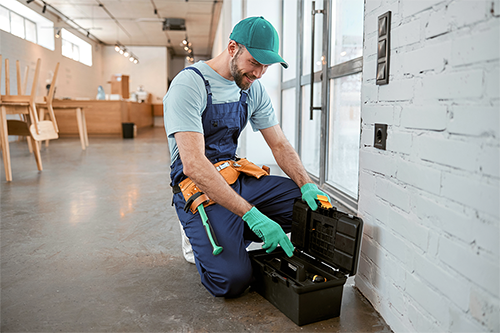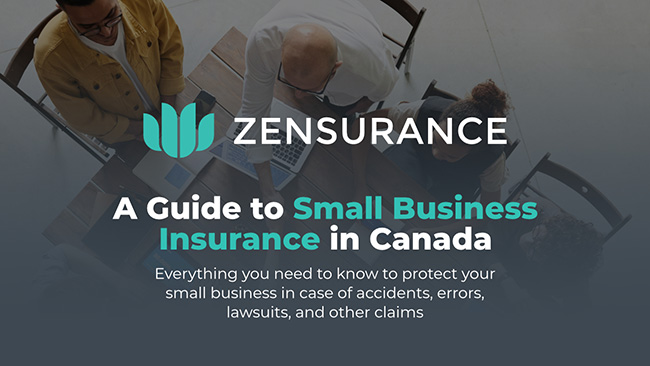Theft of tools, equipment, and raw materials from construction sites across Canada is, unfortunately, a common occurrence.
The estimated annual losses, ranging from $46 million to $1 billion, underscore the widespread nature of this issue. These figures encompass thefts of everything from handheld tools to heavy machinery and equipment.
There are countless examples of these documented crimes, including thousands of dollars worth of high-end tools stolen from a contractor in Kelowna, B.C. Among the most common items thieves target are portable power tools, construction vehicles, materials like copper wiring and lumber, and laptops and GPS devices from job sites.
Knowing tools and equipment theft has almost become a national sport, every contractor and construction professional needs to take action to protect themselves and their gear. Here are eight things to do before and after your tools and equipment are stolen:

Download Our FREE Insurance Guide
Learn everything you need to protect your small business.
Whitepaper - Business Insurance
"*" indicates required fields
Your email address will be used by Zensurance to provide latest news, offers and tips.
You can unsubscribe at any time.

Related Posts
Categories
1. Create a Contents Inventory List
Create and keep an updated detailed list of your tools and equipment inventory and business contents. Include photos of each item, serial numbers, and their values. Doing so can increase the chances of the police recovering them and help expedite any insurance claim you file with your broker or insurer.
2. Document the Loss
Document the stolen tools, including purchase receipts, photos, and serial numbers, as well as a description and photos of where they were stolen from – a storage locker, vehicle, job site, or your shop – and document the damage to the locker, vehicle, or job site where the break in occurred. Look for visible signs of damage and forced entry and document it (for example, a broken lock or car window). It is required when filing a claim under most policies. Also, keep any damaged security features and take pictures of all damages before starting repairs or cleanup. This information will be crucial for the police investigation and insurance claim filing.
3. Report the Theft to the Police
Immediately report any theft to your local police department. Get the officer’s name and contact info and request to receive a copy of that report you can share with your insurance broker.
4. File an Insurance Claim
You’ve got an inventory of your tools and equipment and their values, you’ve reported what’s been stolen from you and when to the police, now contact your insurance broker and file a claim.
As a Zensurance client, you’ll get immediate attention and support from our dedicated claims team, who will ensure your insurance company addresses and investigates your claim promptly. Our claims team will also keep you apprised of the progress and, if necessary, step in to provide assistance and ensure that your best interests are represented.
5. Notify Clients You Might Be Delayed
If your stolen tools and equipment affect ongoing or future projects, it’s crucial to inform your clients about the situation. Communicate any potential delays and outline the steps you’re taking to minimize disruptions and when you can resume or begin work. This professional approach will help maintain trust and transparency with your clients.
6. Rent, Borrow, or Purchase New Tools
If the stolen tools are essential for completing a project, avoid delays by renting or borrowing tools temporarily while your claim is under review.
You could also purchase new tools from a retailer or buy used tools through a third-party marketplace such as Facebook Marketplace, eBay, Craigslist, or Kijiji Classifieds.
7. Review and Improve Security Measures
Assess your existing security protocols and find ways to bolster them. Consider investing in tool tracking and GPS technology, secured storage solutions, and other measures to prevent future thefts. For example, engrave your tools and equipment with personal identification marks.
8. Secure the Job Site
If your tools were stolen from a job site, thieves may return, thinking they can pull off another caper. Don’t make it easy for them by stepping up the security and surveillance of the site. Install cameras and industrial-strength locks, or hire security personnel to monitor the site 24/7 to prevent further thefts.
What Insurance Covers Lost or Stolen Tools and Equipment?
Tools and equipment insurance is vital for every contractor, builder, or construction professional.
This policy covers a wide range of insurable losses, from theft and vandalism to transportable handheld tools and heavy equipment, such as an excavator or backhoe. It also covers repairing or replacing your tools and equipment damaged by fire, water, and natural disasters.
Furthermore, tools and equipment insurance may provide coverage to rent or borrow the gear you need to keep working while your claim is under investigation. If you have larger equipment that would be hard to replace, ask your Zensurance broker about adding this coverage.
How to Get Low-Cost Tools and Equipment Insurance Fast
Zensurance is Canada’s leading small business insurance brokerage providing contractors and construction professionals with the low-cost, customized coverage they need to protect their projects, assets, and finances.
Fill out our online application for a free quote in less than five minutes.
Let us make getting insured quick, easy, and affordable through our network of over 50 insurers. Our knowledgeable brokers are insurance experts who will answer your questions, customize your policy, and issue you a certificate of insurance instantly so you can concentrate on building the future and delighting your clients.
Related Posts
General Contractor vs Handyman: What’s the Difference?
Both general contractors and handymen address their customers’ repair and renovation needs, but the services they each provide – and the liability risks they face – differ significantly. Get a rundown of what they do and the insurance protection they need.
Federal Budget 2025: How Does It Impact Small Businesses in Canada?
Although there are no tax cuts for small businesses, the 2025 federal budget is designed to foster business growth, encourage innovation, and simplify small business owners' access to government initiatives. Here’s what business owners need to know.
Do Dental Hygienists Need Malpractice Insurance?
Many dental hygienists have some liability protection through their employers; however, they’re not obligated to purchase coverage through their associations, and it may not provide them with complete protection from liability claims and lawsuits. Get a quick overview of what you need to know to protect your career and finances.
Sign Up for ZenMail
"*" indicates required fields








